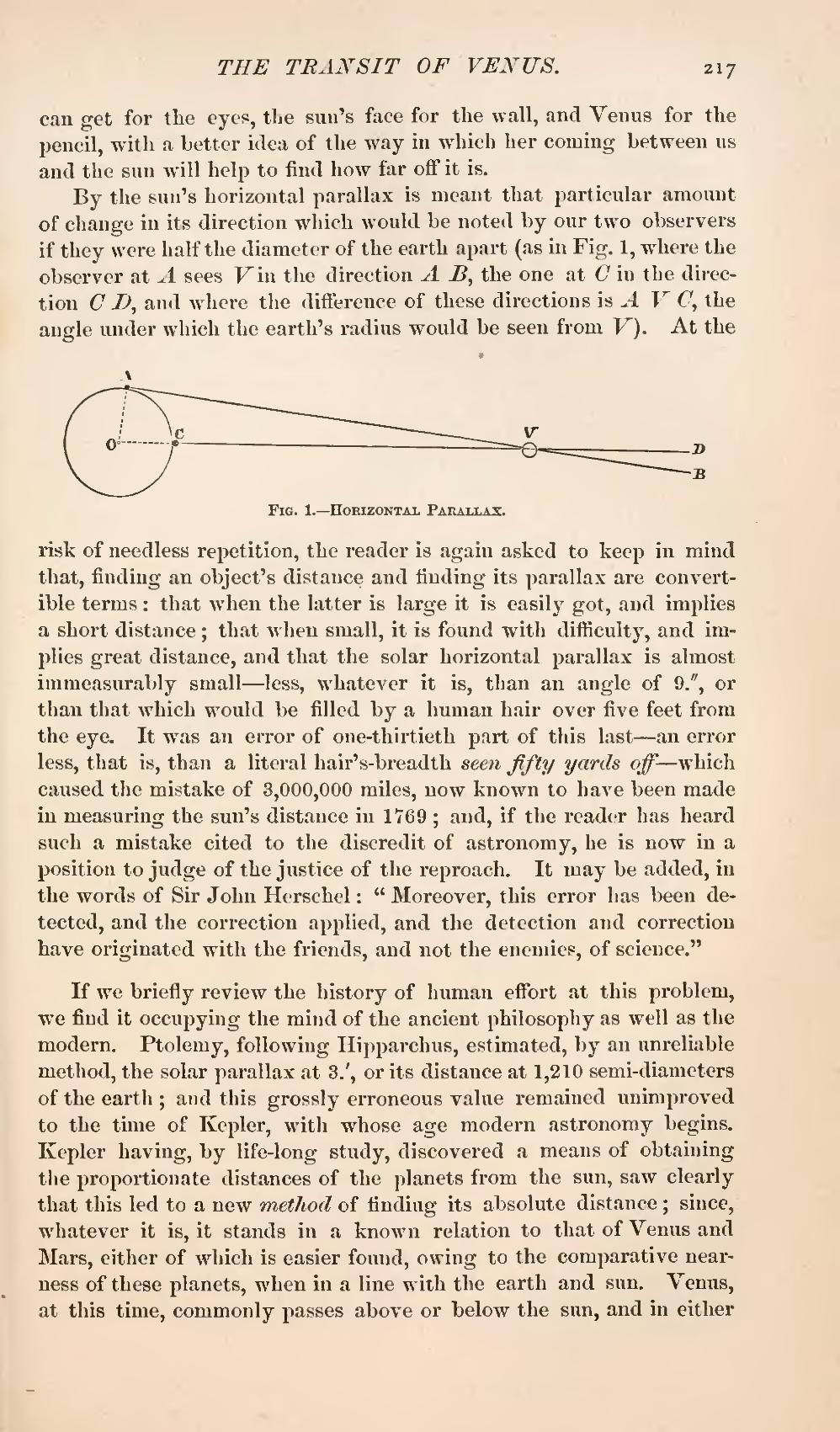can get for the eyes, the sun's face for the wall, and Venus for the pencil, with a better idea of the way in which her coming between us and the sun will help to find how far off it is.
By the sun's horizontal parallax is meant that particular amount of change in its direction which would be noted by our two observers if they were half the diameter of the earth apart (as in Fig. 1, where the observer at A sees V in the direction A B, the one at C in the direction C D, and where the difference of these directions is A V C, the angle under which the earth's radius would be seen from V). At the

Fig. 1.—Horizontal Parallax.
risk of needless repetition, the reader is again asked to keep in mind that, finding an object's distance and finding its parallax are convertible terms: that when the latter is large it is easily got, and implies a short distance; that when small, it is found with difficulty, and implies great distance, and that the solar horizontal parallax is almost immeasurably small—less, whatever it is, than an angle of 9.', or than that which would be filled by a human hair over five feet from the eye. It was an error of one-thirtieth part of this last—an error less, that is, than a literal hair's-breadth seen fifty yards off—which caused the mistake of 3,000,000 miles, now known to have been made in measuring the sun's distance in 1769; and, if the reader has heard such a mistake cited to the discredit of astronomy, he is now in a position to judge of the justice of the reproach. It may be added, in the words of Sir John Herschel: "Moreover, this error has been detected, and the correction applied, and the detection and correction have originated with the friends, and not the enemies, of science."
If we briefly review the history of human effort at this problem, we find it occupying the mind of the ancient philosophy as well as the modern. Ptolemy, following Hipparchus, estimated, by an unreliable method, the solar parallax at 3.', or its distance at 1,210 semi-diameters of the earth; and this grossly erroneous value remained unimproved to the time of Kepler, with whose age modern astronomy begins. Kepler having, by life-long study, discovered a means of obtaining the proportionate distances of the planets from the sun, saw clearly that this led to a new method of finding its absolute distance; since, whatever it is, it stands in a known relation to that of Venus and Mars, either of which is easier found, owing to the comparative nearness of these planets, when in a line with the earth and sun. Venus, at this time, commonly passes above or below the sun, and in either
